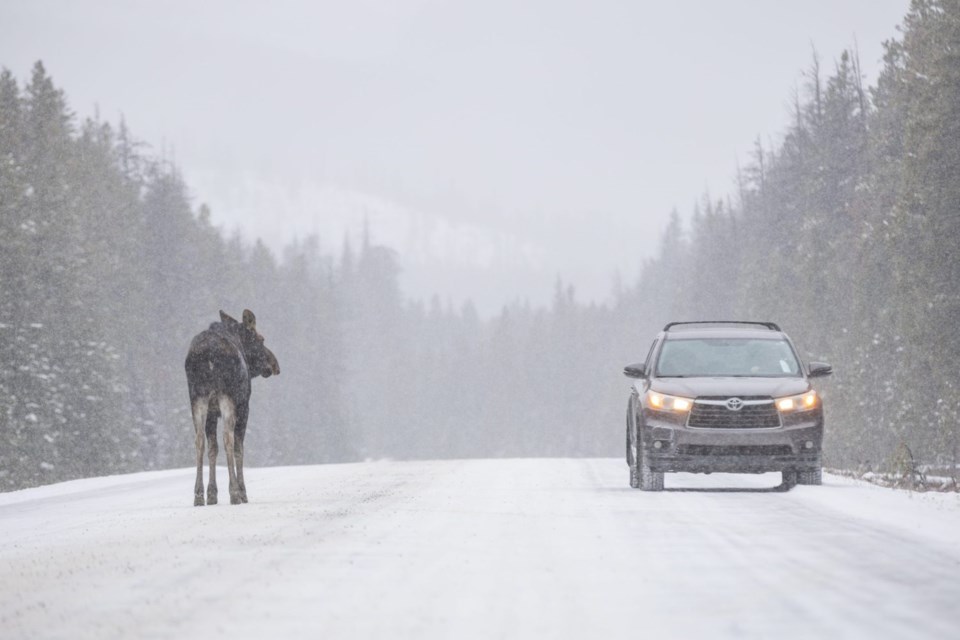“Remember that moose may try to lick your car,” reads a recent social media post for Jasper National Park.
“It's a little bit surprising to some people,” said Tracy鈥疢cKay, Parks Canada’s Ecologist Team Leader in Wildlife Management for Jasper National Park.
Moose are the largest and heaviest members of the deer family. An adult male moose standing up to 2.1 metres at the shoulder and weighing 700 kilograms, while adult females (or cows) can measure in 1.8 metres and weigh as much as almost 500 kilograms.
Animals that size have special nutritional requirements, and they demonstrate a need to supplement their diets with minerals, including salt. Since salt is frequently used in winter road management, the large animals are naturally drawn to licking the pavement and vehicles as well.
Areas such as Maligne Lake Road are especially prone to such encounters as that is where the moose distribution is higher. One report showed 13 moose during one visitor’s drive there.
“The Maligne Road is a difficult place to pull over and safely do any wildlife viewing because there aren't really any shoulders,” McKay said.
“Certainly, it's okay to slow down and have a look at the wildlife. Especially in the case of the moose in the winter when we think it might approach the car, just keep going slowly and carry on. Stopping is not recommended.”
Stopping not only creates a hazard for the animals but it fosters habituation to both vehicles and people that can raise the risk for human-wildlife conflict.
Driving slowly is a good motto for road safety as there may be a moose in the middle of the road licking salt off the asphalt.
McKay offered a list of tips for good driving behaviour: stay in your vehicle, slow down, always obey speed limits, pull over only when it is safe to do so, use your hazard lights and do not stop in driving lanes.
“Observe, take photographs, and move on,” McKay said. “Try not to let the moose lick your car.”
“It sounds hilarious, but that's what it comes down to,” she added. “We're trying to protect the moose, and we're trying to reduce their risk of getting injured by vehicles.”




